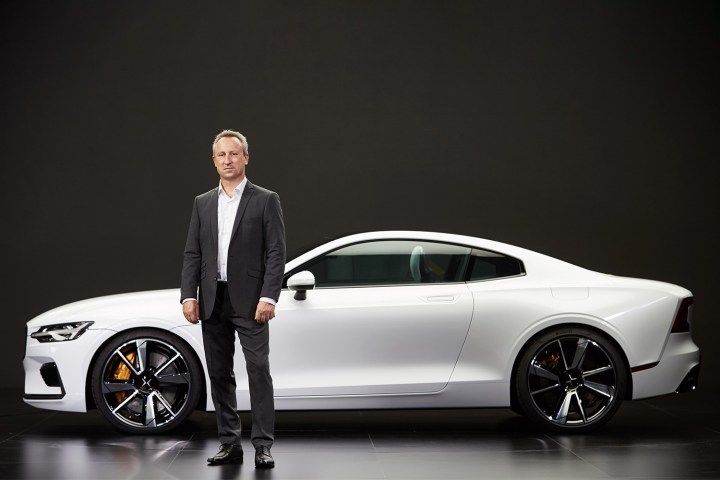
Sweden-based Volvo skipped the 2019 Geneva Auto Show, but sister company Polestar attended the event to quietly show off its second and most significant model. Aimed directly at the Tesla Model 3, the Polestar 2 is a sedan-SUV mashup that will blaze the path that all of the young brand’s future models will follow when it comes to connectivity, powertrain technology, and design. And while Polestar works closely with Volvo, its executives want to give it its own identity by turning it into a digital brand.
Digital Trends sat down with Jonathan Goodman, Polestar’s chief operating officer, to gain insight into what led to the creation of the Polestar brand, and what its values are.
Digital Trends: Why separate Polestar from Volvo?
Jonathan Goodman: I think the areas Polestar is focused on as a performance-electric brand are areas in which Volvo has never been. Having two brands enables us to have a car like the Polestar 1 with 600 horsepower, and a car like the Polestar 2 at 408 horsepower, and to set them up as definite driver’s cars. We’re not chasing the fastest top speed or anything, but the chassis tuning and everything else we’re working on takes us into a different territory. Volvo is appreciated for design, comfort, and safety.

Those territories are complimentary but very different, so that lends itself very much to a standalone brand. And, we have no legacy business to worry about. The other OEMs are going to have to deal with that for a period of time as they go on an electrification offensive. They’re going to ask, “what do we do about our gasoline-powered models, and how to we sell them concurrently with electric models?” At Polestar, we’re going to have an electric-only approach.
How important is in-car tech when you’re making electric cars?
For too long, the car has been kind of the weak point in everyone’s connected life. We’re a digital brand. We want people, if they choose, to do almost everything digitally. We need to make sure the connectivity of our cars is absolutely up to speed with the requirements. The car will recognize your phone, so you’ll be able to walk in and drive off without even pressing the start button. That changes the experience. We’re not going to become less dependent [on our smartphones], and the car has to be a part of that infrastructure.
Why did Polestar choose to work with Google for its infotainment system?
“We’re not going to become less dependent [on our smartphones], and the car has to be a part of that.”
I think the days when we do our own navigation systems, and our own voice control systems, they’re gone. There are companies that do it much better than every car manufacturer. By decoupling the hardware and the software, you can meet up with some of the best players. For us, Google was a good fit. I think Google Maps is great, Google Speech is far better than anything we’ve created. It gives customers a better connected experience, and, above all, something which is constantly updated and constantly up-to-date. I think it will change the game as far as in-car connectivity is concerned.
Will Polestar offer autonomous technology?
Volvo will always be in the lead when it comes to self-driving cars. The Android-powered infotainment system you’ll find in Volvo models at a later date. We’re the spearhead brand for that. For autonomous technology, Volvo will be the spearhead brand because it’s so linked to safety. However, we’re using the Volvo platform, and with the Volvo platform comes the Volvo technology, and with it comes autonomous driving capability. When it comes into the Volvo platforms, it will be available for Polestar models built on those platforms.
Editors' Recommendations
- Tesla faces new rival as a tech giant launches its first EV
- Tesla recalls 363,000 of its vehicles over safety issue
- Sporty Polestar 3 SUV is an EV guiding star
- Tesla starts opening up its Supercharger network to other EVs
- Tesla offers a peek inside its shiny new Giga Berlin factory




